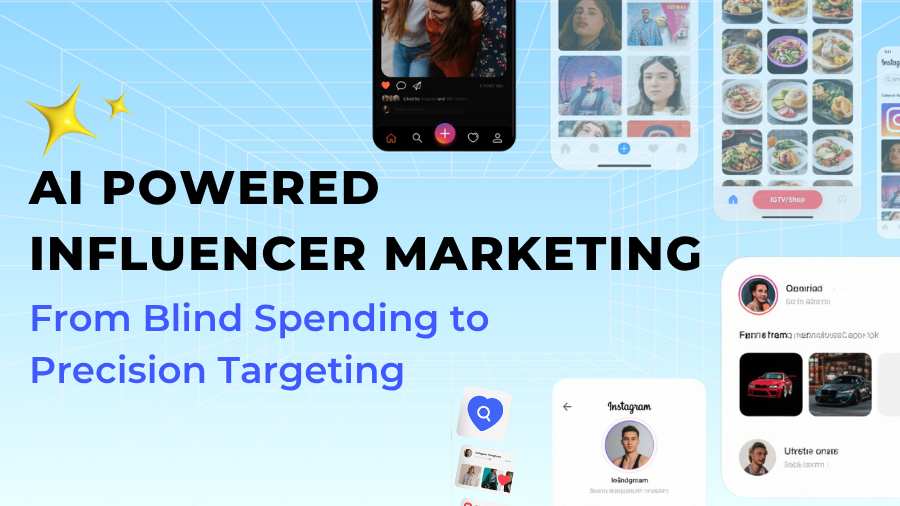
About 63% of consumers say influencer recommendations are the core driver of their purchasing decisions. As traffic dividends peak and user stratification intensifies, how to accurately identify the “key figures” who can reach niche audiences from a vast number of influencers has become the key to breaking the bottleneck of brand growth.
Relying on broad tags such as region, gender, industry, and lifestyle makes it difficult to lock in key influencers who can reach segmented audiences from a large pool of influencers. Additionally, judging influencer quality and commercial value based solely on intuition makes influencer selection feel like “opening a blind box,” with an extremely high risk of mistakes.
There are 5-6 million women in the United States suffering from hirsutism caused by Polycystic Ovary Syndrome (PCOS), who have an especially urgent need for hair removal. When the well-known hair removal devices brand Ulike tried to reach this group through influencers, it encountered difficulties: influencers found using broad tags like “health” and “skincare” were mostly fitness bloggers and fashion influencers, who had very low relevance to the PCOS group and could hardly accurately reach PCOS patients.
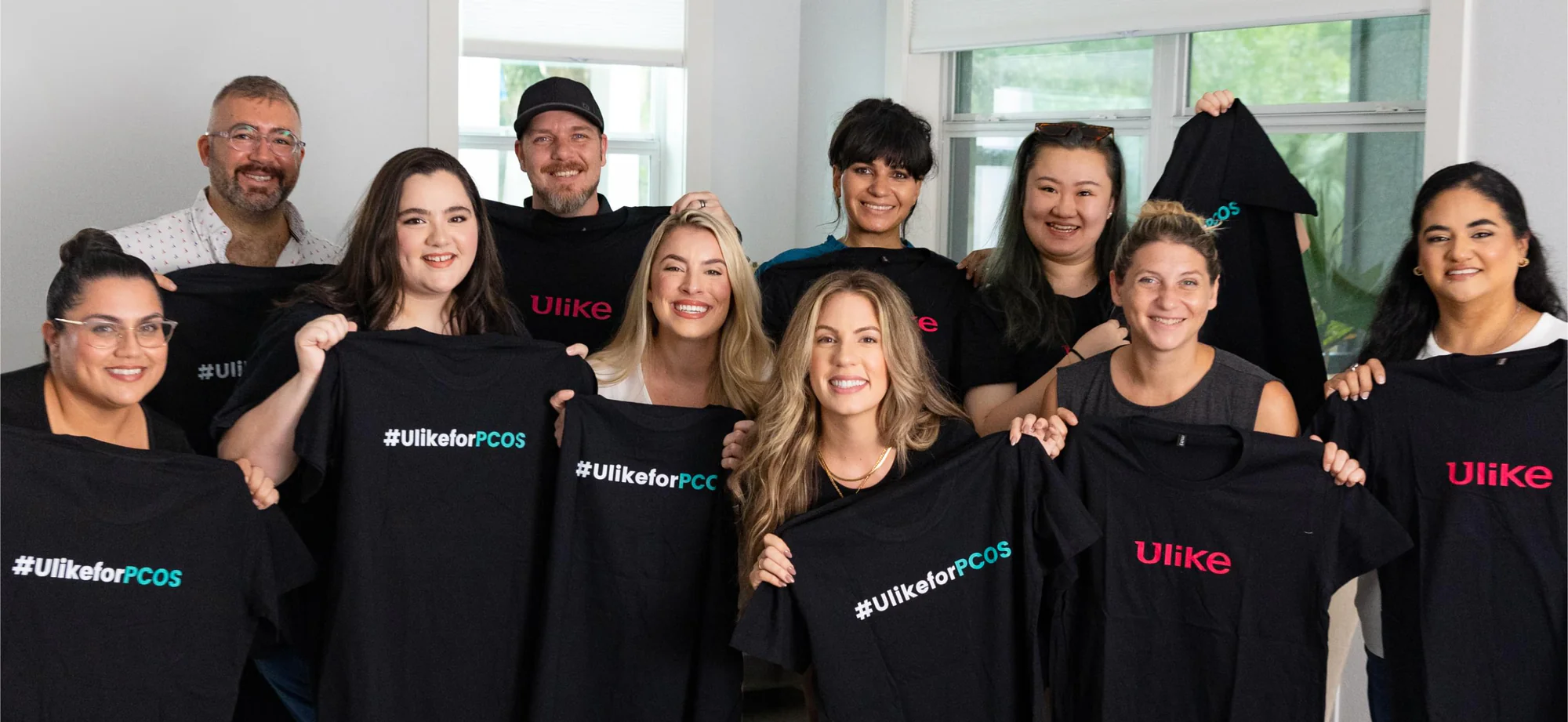
Relying on hyper-targeted persona tags and a Four-Dimensional Linked Evaluation Model, GlodaStory reconstructs influencer selection logic through AI, breaking out of the blind selection misunderstanding. It accurately locks in patients, doctors, and advocates who truly understand the PCOS group, ultimately driving 2.43 million professional visits for the brand and achieving breakthrough growth in overseas influencer marketing ROI.
AI Reconstructs Influencer Selection – Break Out of Blind Selection, Accurately Penetrate Niches
Hyper-Targeted Persona Tags: Uncover Influencer Niche Characteristics
Using multi-modal AI and GPT to integrate and interpret influencers’ account information, content, and fan interactions within 60 days, it depicts influencer niche characteristics from perspectives such as scenarios, interests, styles, value propositions, and fan portraits. This generates hyper-targeted persona tags that are updated in real-time with influencers’ dynamics, always staying “fresh.”
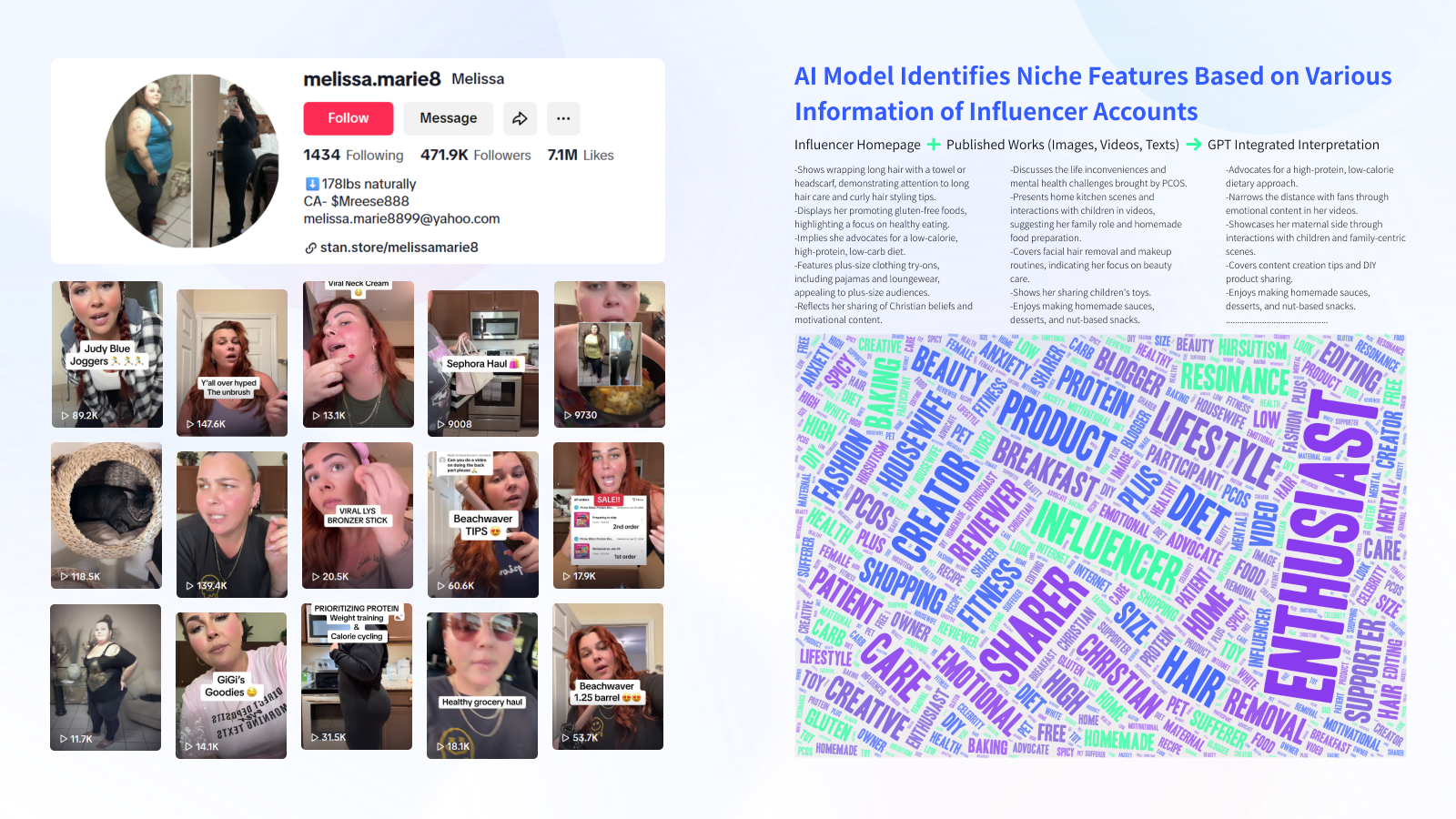
When searching for influencers related to the PCOS group, input “PCOS” to get a list of related influencers in seconds. Adding positioning keywords like “doctor,” “patient,” and “advocate” can further clarify the substantive relationship between influencers and PCOS, distinguishing whether the influencer is a patient, professional, or supporter. This completely solves the problem of “finding the wrong people.”
Four-Dimensional Linked Evaluation Model: 360° Insight into Influencers’ True Value
After locking in influencers strongly associated with PCOS, who should the limited budget be invested in?
Looking only at surface dimensions such as follower count and engagement rate is not enough. GlodaStory introduces four deeper evaluation indicators: influencers’ historical cooperation, audience fit, traffic stability, and cross-platform influence. It focuses on “tone fit” and “budget efficiency,” comprehensively evaluating influencers’ commercial value, seeding effectiveness,带货 ability (conversion power), and resonance with the audience group. This minimizes cooperation risks and ensures every dollar of the budget is spent effectively.
- TA Match (Audience Fit): How well do the influencer’s persona and fan portrait match the segmented group? The higher the similarity, the more accurate the reach.
- Commercial Cooperation Value: From the influencer’s historical cooperation categories, brands, and repurchase rate, identify cooperation risks and predict cooperation quality and effectiveness.
- Traffic Stability: Is there significant fluctuation in the influencer’s content frequency, quality, exposure, and engagement? Avoid “roller coaster” campaign effects.
- Cross-Platform Influence: Analyze the influencer’s operations on platforms such as TikTok, Instagram, and YouTube to evaluate their global communication value.
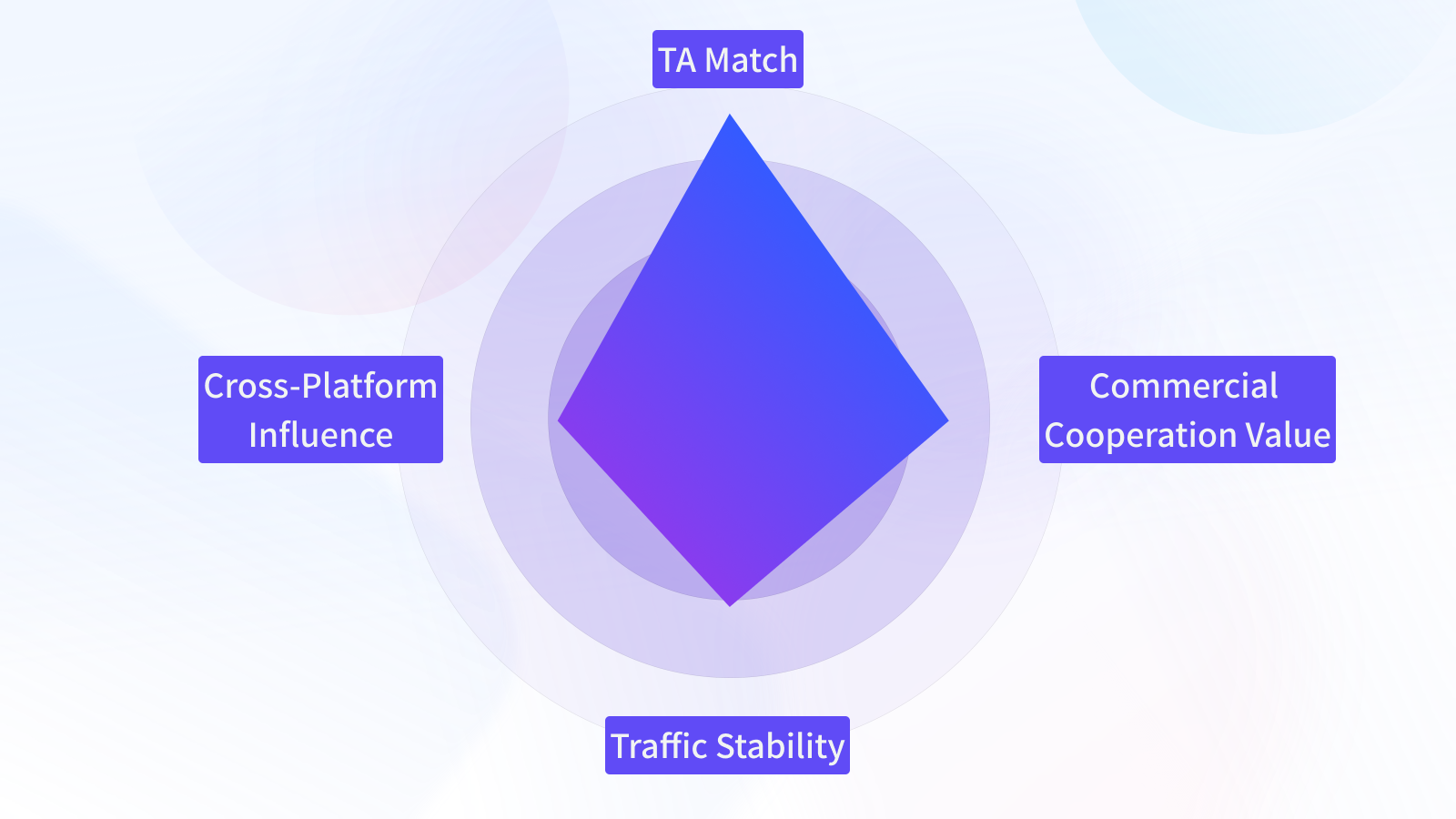
AI Agent + Intelligent Recommendation: 20x Faster Influencer Discovery
“Finding fast” is the key to seizing opportunities. In the past, manually screening 50 PCOS-related influencers took 2-3 days – searching for PCOS on each platform one by one, clicking into each influencer’s homepage to view content and comments, and guessing the “human-to-human” relevance based solely on experience, which was inefficient and unreliable.
Now with AI Agent, input the “influencer search” demand to get a candidate list in seconds. It can find 100 valid PCOS candidate influencers in 1 hour, significantly shortening the screening cycle. If there is a “favorite” influencer, the Agent can automatically recommend a batch of “affordable alternatives” with similar characteristics, styles, and audiences, quickly expanding the influencer candidate pool. It is difficult for manual methods to produce the same scale of influencer candidates.
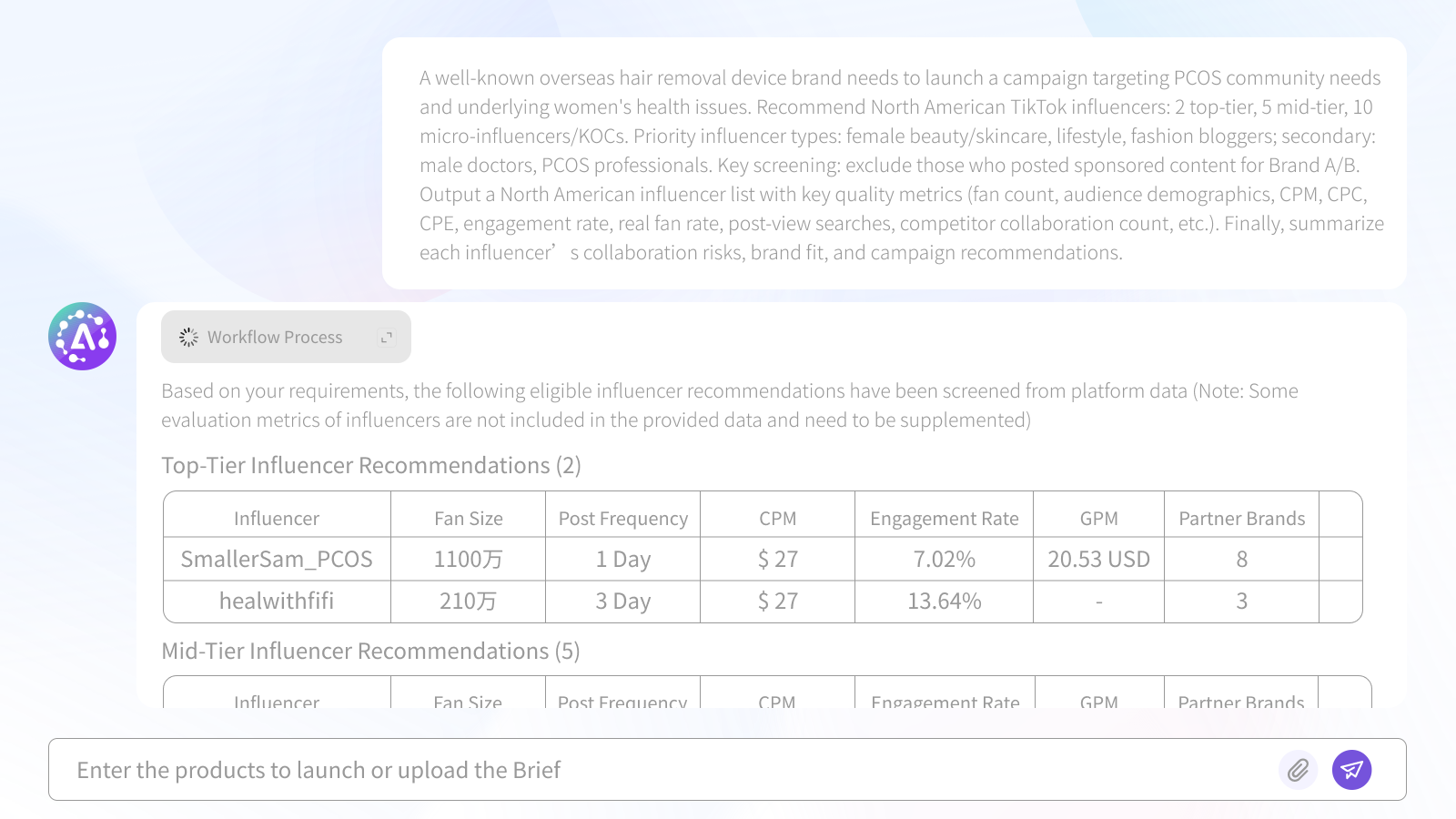
Precise Influencers Drive 2.43 Million Visits, Achieving Both Branding and Effectiveness
The 10 “key figures” in the PCOS niche ultimately selected brought Ulike an average video playback volume of 7.7 million, a peak engagement rate of 35%, and 2.43 million visits to the official website campaign page. The ROI soared, and Ulike’s brand image upgraded from a “hair removal device product brand” to a “technology brand focusing on women’s physical and mental health.”
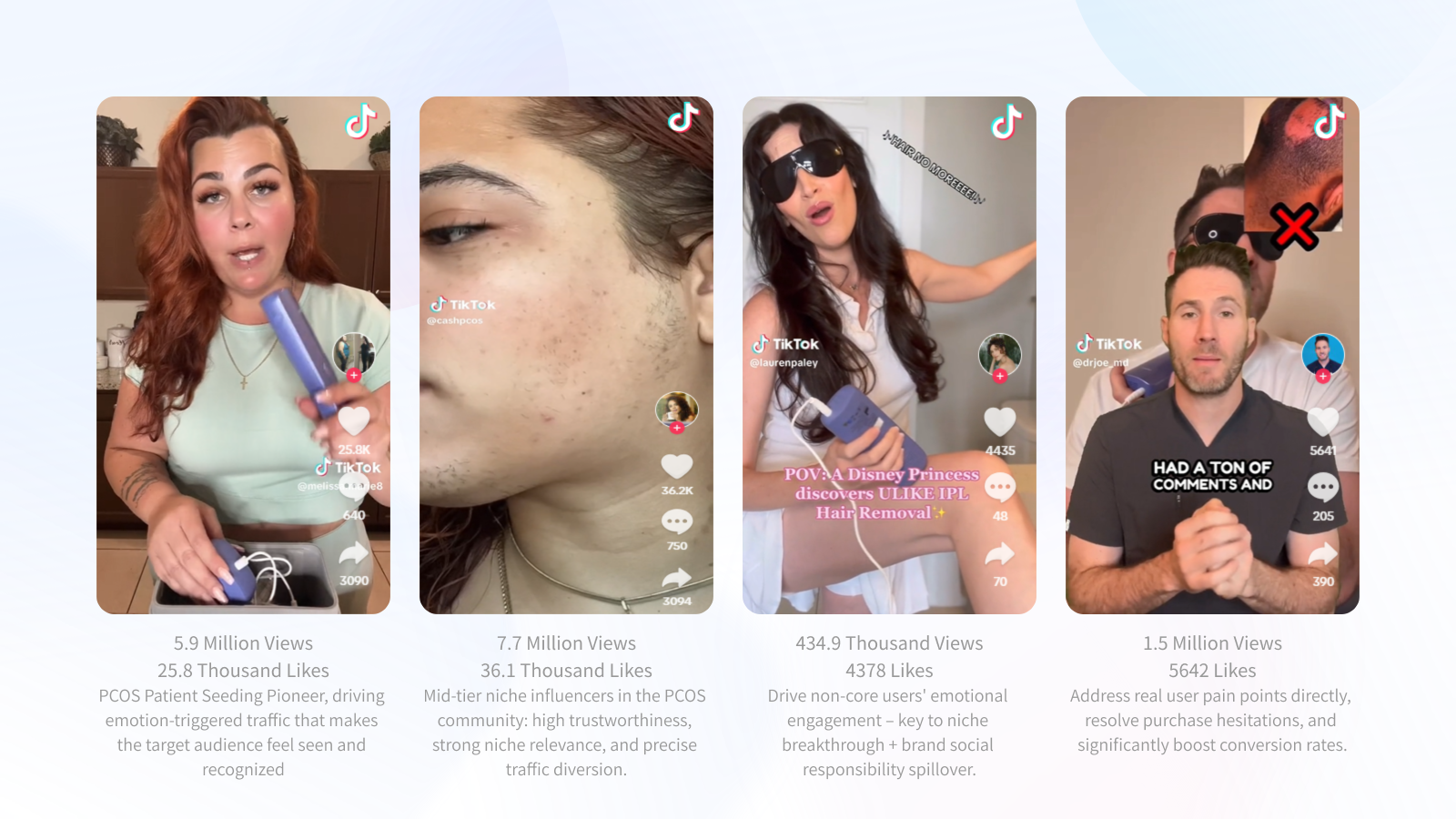
After the ebb of traffic dividends, “finding the right people” is more important than “finding a bunch of people.” AI transforms brands’ Influencer Marketing from “blind screening” to “precise targeting” and from “relying on luck” to “calculable accuracy.”

